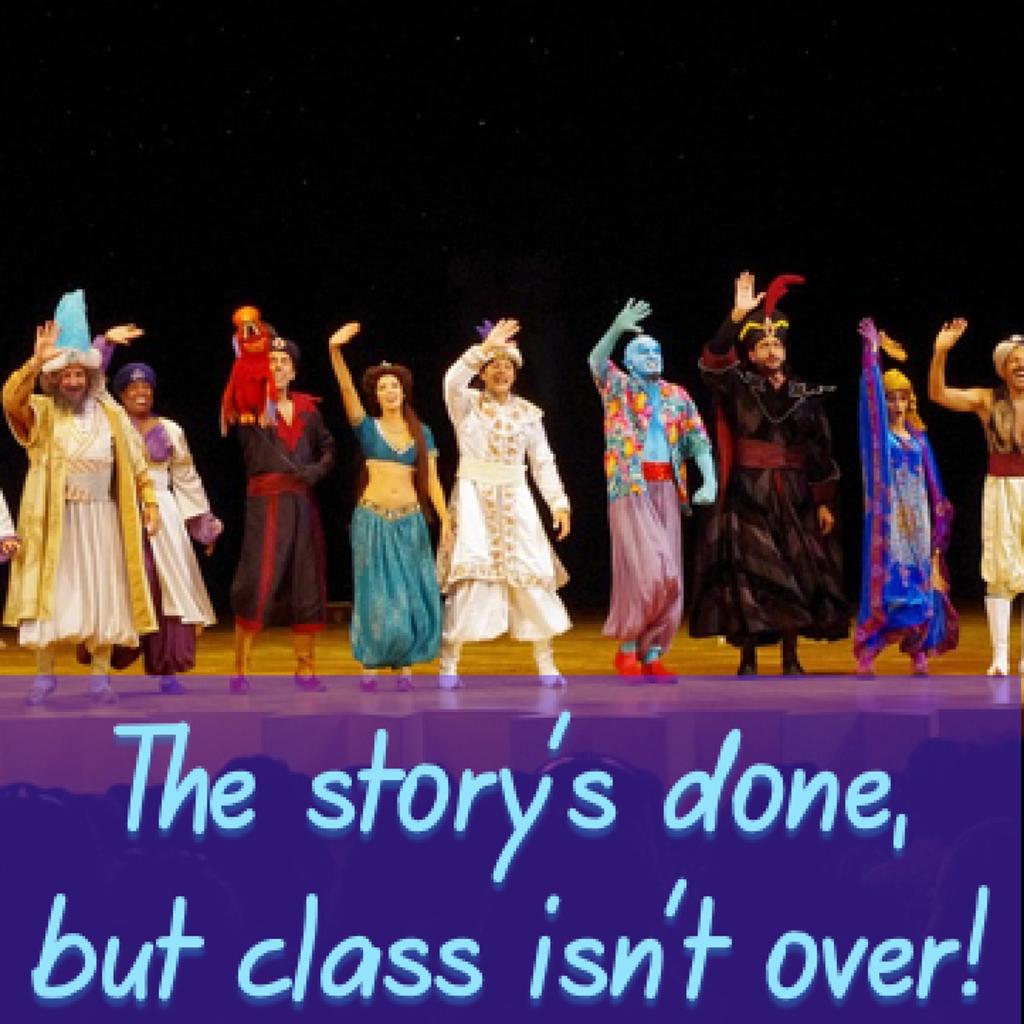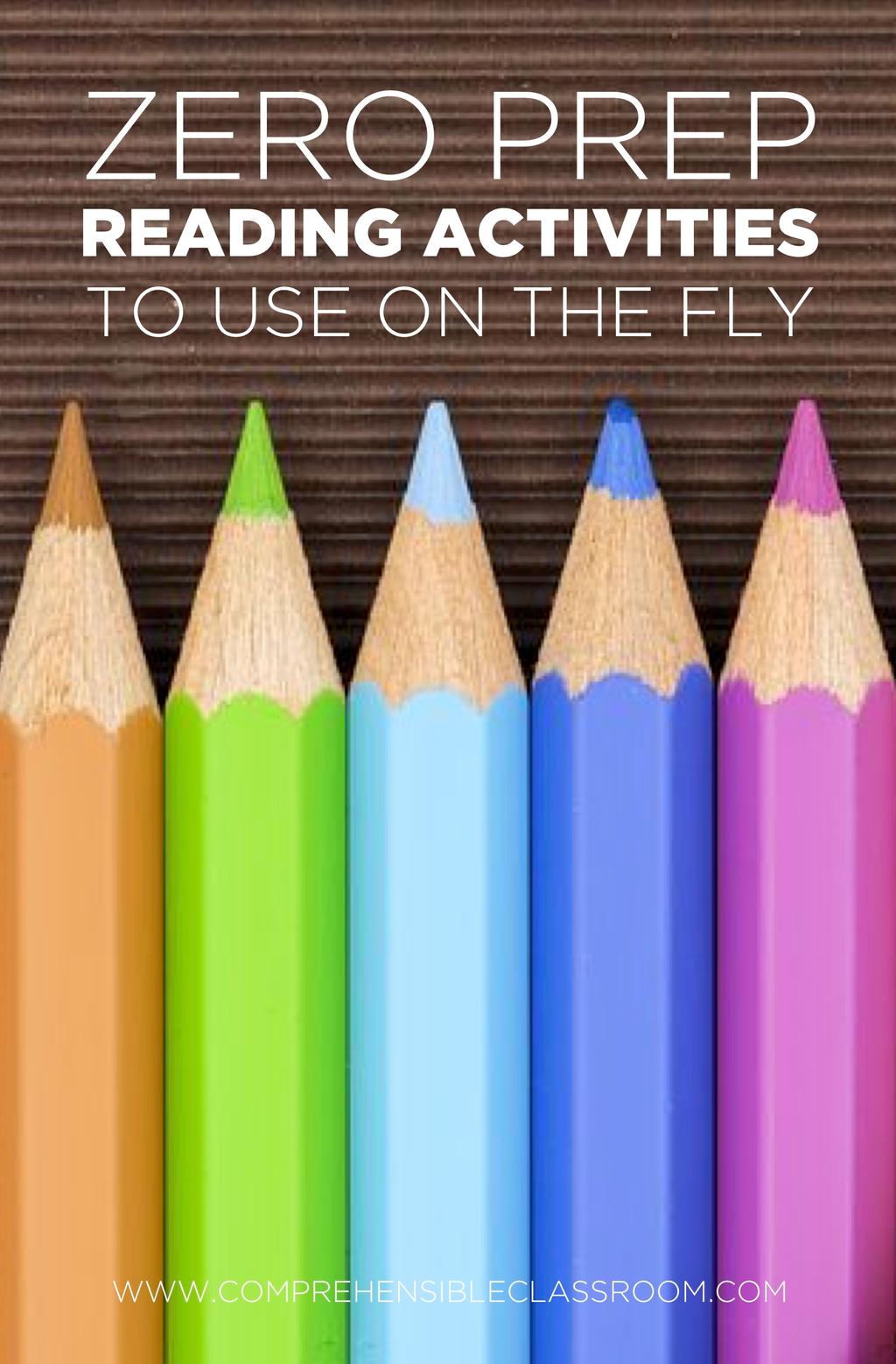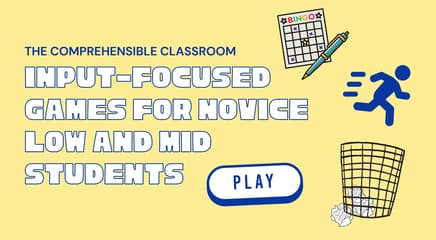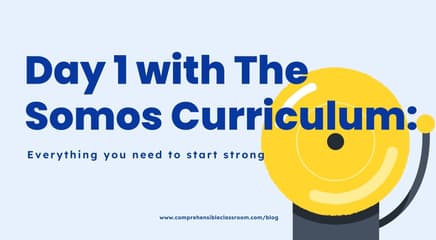
Whether you are on a block schedule and are always left with time after you finish asking a story or a story carries over into a second class period and leaves you with 30 minutes of time to fill, you’ve probably wondered “what activities can I do with this story NOW?” Some of my favorite activities require printed copies of the class story, and it is important for students to read the story at some point (as opposed to hearing it again).
Right after I’ve finished asking a story, I like to use a story activity that allows me to repeat the story in its entirety. This serves to provide more repetitions of all of the target structures, and it will remind students what happened in the story so that they can recall the events better when completely other story activities. If you finish the story in the middle of a period or block, you won’t yet have a complete, typed story to read with students, so you need to use an activity that will allow you to do an oral retell of the story or that will generate said complete, typed story.
Activities that will allow for a complete oral retell (no printed text needed):
Click on the title of each activity for a detailed description.
Embedded storyboard: You retell the story, and students illustrate the storyboard. Embedded storyboards (developed by the Embedded Reading duo of Michele and Laurie) help students to analyze the story structure (main plot vs. additional details) and they provide excellent scaffolding for re-tells.
Class storybook illustration: As you retell the story, you divide it into scenes and assign a scene to a student or group of students. Once the retell is complete, you set students to work illustrating their assigned scene, and you later create a class storybook with their illustrations. (Then you could scan and send it to Mike Peto to add to his collaborative class story library!)
Simultaneous acting: Divide students into groups, assign roles from the story, and then let students loose acting out the story in their small groups as you retell it.
Back At’cha: Divide the class into two teams and have them compete to say something that happened in the story that hasn’t already been shared. When you’re done, you’ll have a complete, typed text.
Cooperative Mural: Students take turns coming to the board to illustrate the story as you retell it. You could also do Individual Murals, in which students illustrate the story on their own (in mural or storyboard form) while you retell it.
Story Strips: Students write down two events or pieces of information that they remember from the story and then take turns sharing it with the class. You guide the activity and help the class put the events in order, so that when you are done you will be able to read through the story in its entirety.
Once you've done a complete retell of the story, there are lots of other activities that you can do that will review some events and ideas from the story.
Activities that you can do without a written copy of the text but work best after you’ve already retold the story at least once:
Pencil Grab: Put students in pairs and place a pencil between them. Then, you make a true or false statement about the story and the students in each pair compete to grab the pencil first if it is true.
Write, Draw, Pass: Students take turns writing, illustrating, and interpreting illustrations of events from the story.
Story Elements Glove: With teacher guidance, students identify the five story elements of the class story and express an opinion about it.
Liar, Liar: Students write two true and one false statement about the story, then classmates identify the false statement.
Jeopardy Q&A: You give students the answer to a question about the story, and students write a question that would elicit that answer.
Top Ten: Students identify the ten most important events from the story (I like to follow it with a Running Dictation and then Pick the Pic)
T/F Storyboard Quiz: Students use storyboards that they’ve illustrated to write a T/F quiz for their classmates.
Before/After Communicative: Students illustrate events from the story and then ask classmates to identify what happened before or after that event.





